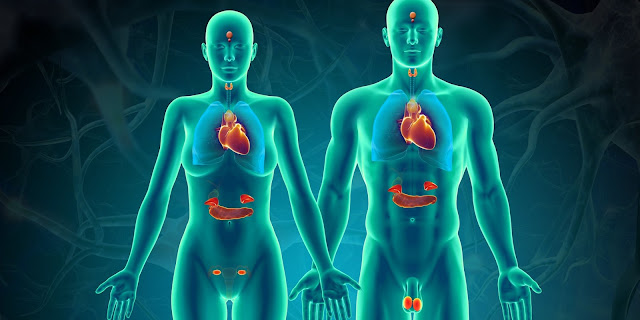Clostridium Difficile: Diagnosing and Treating a Deadly Hospital Infection
Clostridium difficile, commonly known as C. difficile or C. diff, is a bacterial infection that can cause life-threatening inflammation of the colon. It is one of the most common healthcare-associated infections in hospitals and long-term care facilities. Early diagnosis and treatment is critical to stop the spread of C. diff and improve patient outcomes. This article will explore the various diagnostic tests and treatment options available for this serious infection.
Diagnosing C. Difficile Infection
The first step in managing C. difficile is confirming the diagnosis through
laboratory testing. Several tests are available to detect the presence of C.
difficile or its toxins in a patient's stool sample.
Toxin Enzyme Immunoassay (EIA) - The EIA is a rapid toxin detection test that
provides results within a day. It looks for proteins produced by C. difficile
called toxins A and B that cause inflammation. A positive EIA confirms C.
difficile infection. However, it may miss some cases.
Toxin PCR Testing - Polymerase chain reaction (PCR) testing is more sensitive
than EIA for detecting C. difficile genes that produce toxins A and B. It
provides accurate results even when a small number of toxigenic bacteria are
present. PCR has largely replaced EIA as the main diagnostic test.
Glutamate Dehydrogenase (GDH) Testing - GDH is an enzyme produced by both toxigenic
and non-toxigenic strains of C. difficile. GDH screening identifies patients
likely to be shedding C. difficile while PCR confirms whether the identified
strain produces toxins. Using both tests provides the most comprehensive
diagnosis.
Culture Testing - While not routinely done, culture testing allows isolation of
C. difficile from stool samples for further analysis. It is useful for
epidemiologic studies to monitor antimicrobial resistance patterns over time.
Considering the high accuracy of PCR and availability of fast results, it is
now the standard diagnostic test for suspected C. difficile infections in most
hospitals and laboratories across the country.
Treatment of C. Difficile Infection
Once a C.
Difficile Infection is confirmed, treatment focuses on stopping
symptoms and further transmission. Treatment approaches may include:
Antibiotic Therapy - Metronidazole and oral vancomycin are the standard
first-line antibiotics used to treat C. difficile. They work by eliminating the
infection and are taken for 10 to 14 days. Fidaxomicin is a newer antibiotic
with high C. difficile cure rates and low resistance development.
Discontinuation of Unnecessary Antibiotics - Any antibiotics not essential for
treatment of the underlying illness should be stopped to avoid further
disruption of the normal gut flora and recurrence of C. difficile symptoms.
Probiotics - Supplying "good" bacteria through probiotic
supplementation helps restore the natural balance of microbes in the gut.
Lactobacillus species and Saccharomyces boulardii are commonly used adjunctive
probiotics under medical guidance.
Fecal Microbiota Transplantation (FMT) - This novel treatment approach involves
transplantation of healthy donor stool into the colon of infected patients via
colonoscopy, enema or capsule. It has revolutionized management of recurrent C.
difficile infection with cure rates over 90% due to transfer of gut protective
microbiota.
Supportive Care - Ensuring adequate hydration, nutrition and symptom management
through anti-diarrheal and anti-inflammatory medications forms an important
part of overall treatment strategy along with prevention of infection spread
through isolation and environmental decontamination.
Treating underlying medical conditions predisposing to C. difficile infection
such as inflammatory bowel disease, malignancy and antibiotics also optimize
treatment response and prevent relapses. While relapses do occur in around 20%
of cases, proper treatment regimens combined with good infection control practices
help save lives.
Preventing the Spread of C. Difficile in
Healthcare Settings
Hand hygiene with soap and water or an alcohol-based handrub is the most
important practice for interrupting transmission of C. difficile spores between
patients and environments. Other prevention measures include:
- Contact Precautions: Gloves and gowns for patients colonized or infected with
C. difficile.
- Daily cleaning and disinfection of patient rooms and high-touch surfaces with
sporicidal agents like sodium hypochlorite or bleach.
- Dedicated isolation rooms or areas for infected patients until diarrhea
resolves.
- Environmental culturing to monitor hospital bioburden levels.
- Antibiotic stewardship programs to optimize prescribing and decrease
unnecessary usage that drives C. difficile incidence.
- Education of healthcare workers on proper hand hygiene and importance of
protective equipment during contact with infected patients.
With heightened focus on early testing, targeted treatment and rigorous infection
control strategies, hospitals aim to curb transmission of this deadly pathogen
and protect vulnerable patient populations. Combining evidence-based diagnostic
and therapeutic advances with prevention programs offers the best approach for
C. difficile management currently.
Get
more insights on this topic: https://www.insightprobing.com/clostridium-difficile-diagnosis-and-treatment/




Comments
Post a Comment